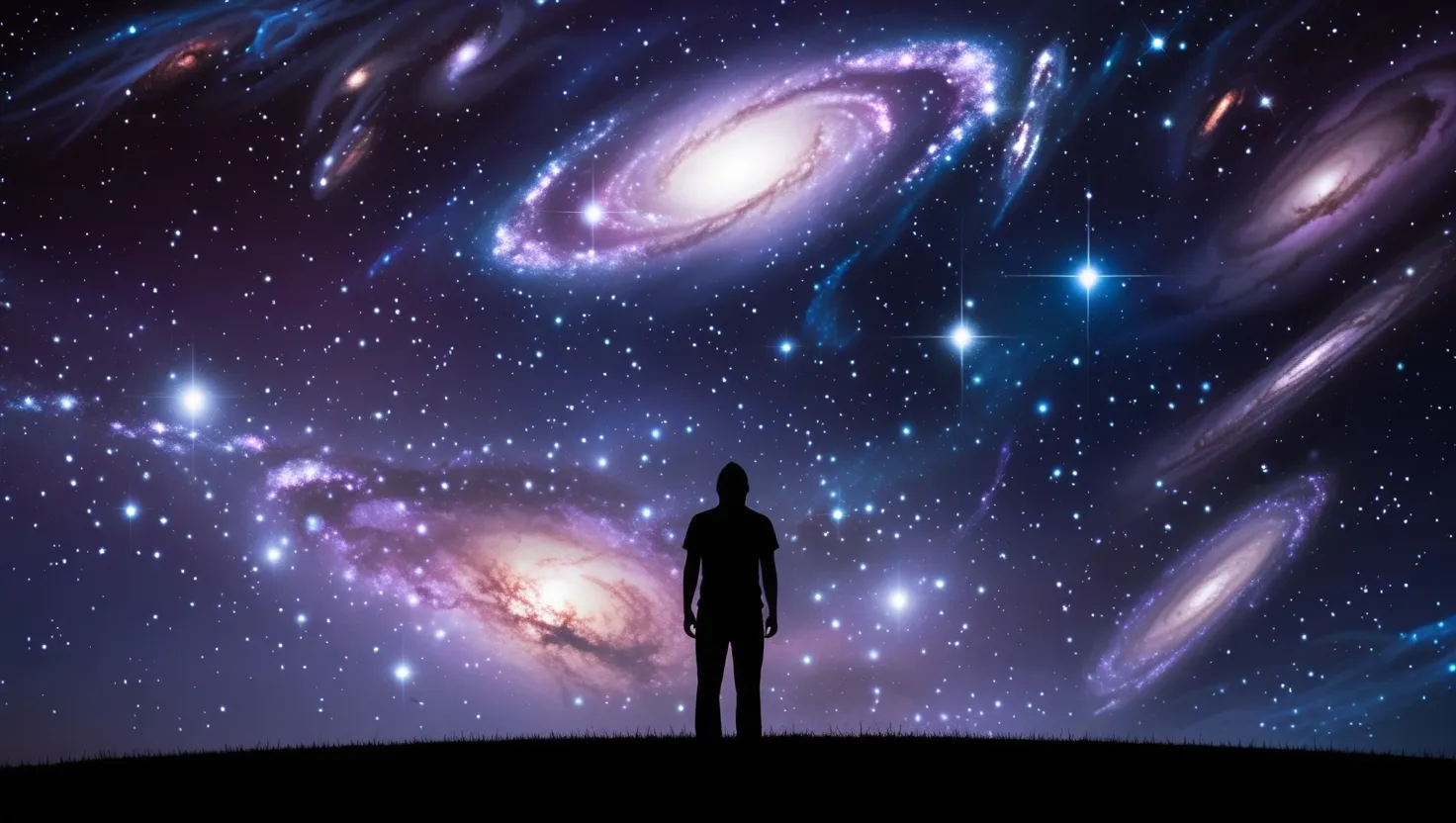Imagine standing beneath a night sky, gazing up and wondering: How did this all begin? I find myself returning again and again to this primal curiosity, and no matter how much we learn about the universe’s birth, the most profound questions only multiply. The early universe, in all its paradoxical simplicity, hides riddles so deep that each answer seems to spark two new questions. So let’s travel together through five cosmic mysteries that continue to stump, provoke, and astonish scientists and stargazers alike.
The story of our universe starts with an explosion of expansion—cosmic inflation, an idea first proposed more than four decades ago. The universe didn’t just grow; it ballooned in size in the tiniest split second, stretching quantum ripples into the seeds that would grow into galaxies and clusters. But what really set off this wild expansion? Despite the best efforts of theorists, the precise trigger remains stubbornly elusive. Was it a special field, one that no longer exists or is hidden from all detection? Was it a fleeting state of energy that collapsed just right? Every time I read about this, I picture a calm lake suddenly disturbed by a single, perfectly timed pebble—but what hand threw it, and why? This is not only a puzzle of physics but a philosophical challenge: Can effects exist without clear causes?
Stephen Hawking once commented, “The universe doesn’t allow perfection.” Perhaps that’s why the neatness of cosmic inflation remains open to debate. Some physicists argue that inflation is almost too tidy, too successful at smoothing out the universe’s wrinkles. Did the laws of physics themselves conspire to make the universe as uniform and structured as it appears, or does the answer demand new realms of physics—ones that might forever stay in the shadows?
Let me ask you: If the universe began with such a rapid, all-encompassing expansion, what determined the rules and limits of that process? Is there a boundary to our knowledge, or are we merely at the foot of a much steeper hill?
As we move further, another mystery looms—a pair of cosmic phantoms: dark matter and dark energy. Though invisible, these dominate everything we see. Dark matter pulls galaxies together, its gravity sculpting the cosmic web, yet it refuses to show its face in any telescope. Dark energy, on the other hand, pushes galaxies apart, accelerating the universe as if some hidden repulsive force is swelling space itself. The strangest part? We don’t know if these are relics from the first moments of existence, or if they bubbled up later from some fundamental property of space and time.
Suppose you were there, watching the cosmos flicker into being. Would you see dark matter forming, swirling around the hot, crowded particles? Or would it already fill the stage, silent but essential, waiting for galaxies to coalesce in its gravitational net? And dark energy—was it whispered into the fabric of existence from the very first spark, or did it awaken quietly, only to shout as the universe aged?
Niels Bohr once said, “Prediction is very difficult, especially if it’s about the future.” But in cosmology, predicting the past can be just as tricky. Every model of the universe must grapple with the puzzle of these silent actors. Most of what we think of as reality—planets, stars, all the visible clouds and galaxies—amounts to less than five percent of what’s really out there. The rest is unknown, an ocean whose depths we can barely probe.
Now picture this: the fireball of the early universe, matter and antimatter bursting into existence as pairs, destined to annihilate each other. The laws of physics strongly suggest that equal amounts of each should have emerged. But the universe clearly didn’t get that memo. Instead of canceling each other out in a final flash, a tiny excess of matter—perhaps one extra particle for every billion—remained to form everything we know. Why did the scales tip in favor of matter? Did some subtle mechanism, hidden in the laws of physics, favor survival over self-destruction? Or does this imbalance point to whole new kinds of particles, interactions, or symmetries?
If you think about it, this isn’t just an astronomy problem—it’s the reason we exist at all. If the universe had favored symmetry, we wouldn’t be here to ask the question. Paul Dirac mused, “The measure of greatness in a scientific idea is the extent to which it stimulates thought and opens up new lines of research.” This mystery certainly does both.
If you had the chance to ask the cosmos a single question, would it be: Why do we have more matter than antimatter? Or would you choose to know what, if anything, was present before it all began?
The nature of the universe’s apparent beginning, the “initial singularity,” pushes even our most trusted theories to their limits. The equations tell us that at the Big Bang, density, temperature, and pressure reached infinite values—a point where current laws of physics break down entirely. But infinity, I suspect, is the universe’s way of telling us we’re missing something fundamental. Was there really a singular “moment” of creation, or does that notion dissolve under closer inspection? Some theories suggest time itself blossomed with the birth of the universe, making the concept of “before” meaningless. Others propose wild ideas: perhaps our universe budded from a previous cosmos, or perhaps the Big Bang was a transition, not an origin.
Asking what came before the Big Bang is like asking what’s north of the North Pole. Yet curiosity keeps us coming back to this enigma. How could everything we know—space, time, energy—emerge from a “nothing” we don’t understand? The core of this question, for me, is a reminder that science and philosophy are never far apart, especially when exploring the deepest roots of reality.
Albert Einstein once quipped, “The most incomprehensible thing about the universe is that it is comprehensible.” But here, at the starting line of it all, the universe still guards its first secret.
Another puzzle that begs for attention is the so-called horizon problem. When scientists measure the temperature of the cosmos, they find it almost perfectly uniform in every direction. But according to the simple rules of causality, most regions couldn’t possibly have exchanged information or energy—they’re too far apart, separated by more distance than light could traverse since the beginning. So how did these vast, disconnected patches end up so astonishingly similar? Inflation theory suggests a solution: that the entire observable universe once fit within a space smaller than an atom, allowing uniformity before inflation set in. But while this is a compelling narrative, the details remain to be confirmed and the mechanism of “why inflation started” is as opaque as ever.
Have you ever wondered just how far the limits of communication are in our universe? If distant galaxies couldn’t have shared their physical state, how did they end up so synchronized?
Richard Feynman warned, “I think it’s much more interesting to live not knowing than to have answers which might be wrong.” This spirit is at the heart of cosmology: a discipline happy to admit confusion, to delight in paradox, and to chase mysteries wherever they lead.
Each of these five puzzles—what set off inflation, the origins of dark matter and dark energy, the matter-antimatter imbalance, the riddle of the singularity, and the horizon problem—serves as a beacon. They’re not just technical hurdles; they’re invitations to rethink everything, to invent new mathematics, and to question old assumptions. The frontiers of cosmology remind me that the more we know, the more modest we must become in the face of what we still do not understand.
As you ponder these mysteries with me, consider: How many of today’s “answers” will tomorrow’s science revise or overturn? What blindingly simple insight, hiding in plain sight, will someday change our cosmic story forever? The universe, in its unfathomable vastness, may never run out of questions. Maybe that’s the real reason we keep looking up.






